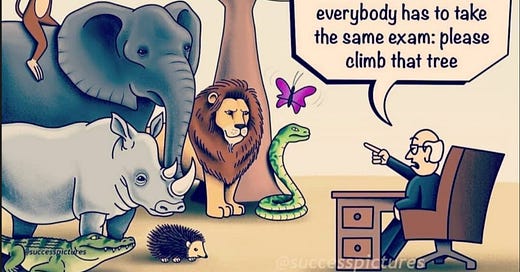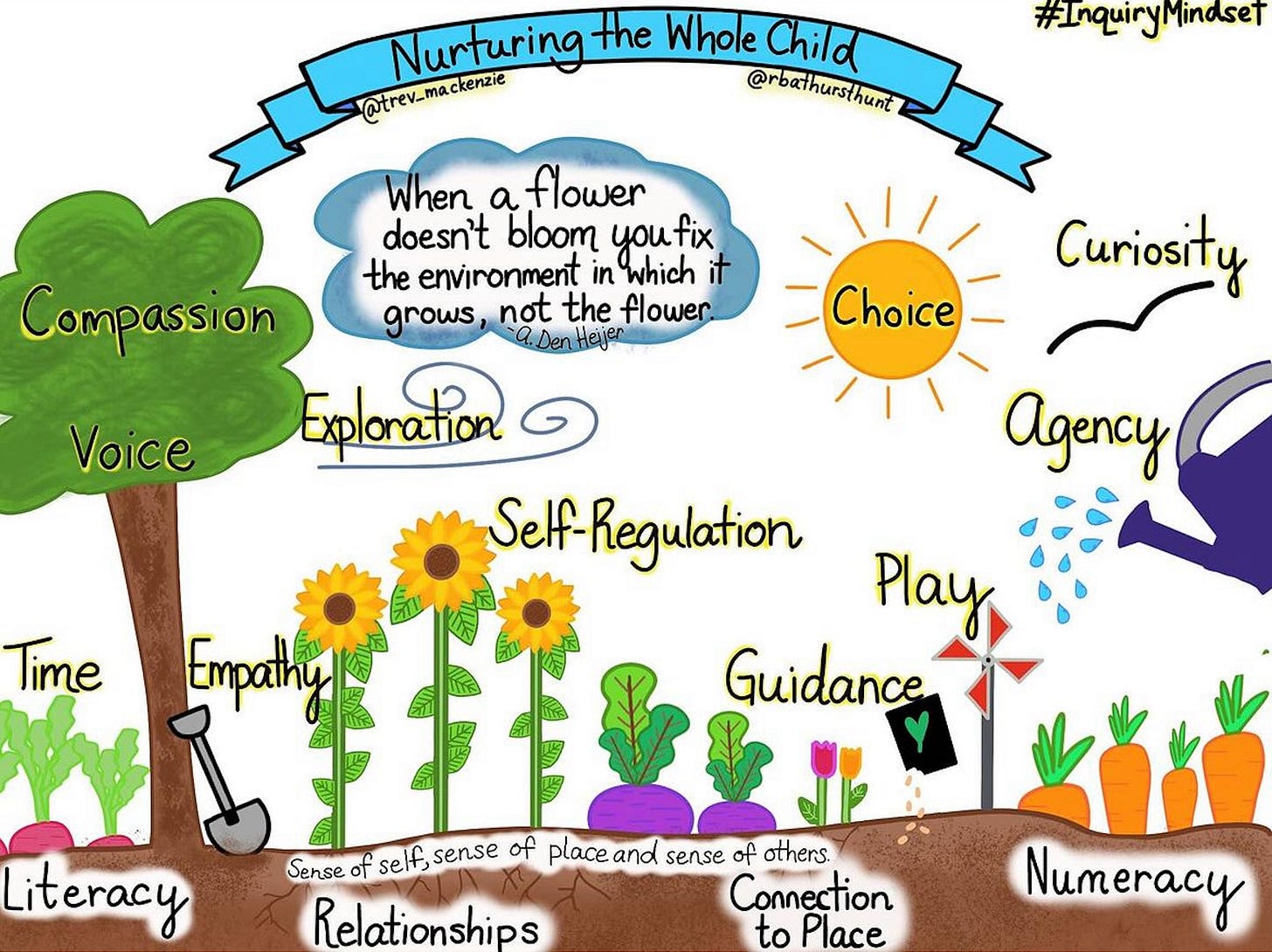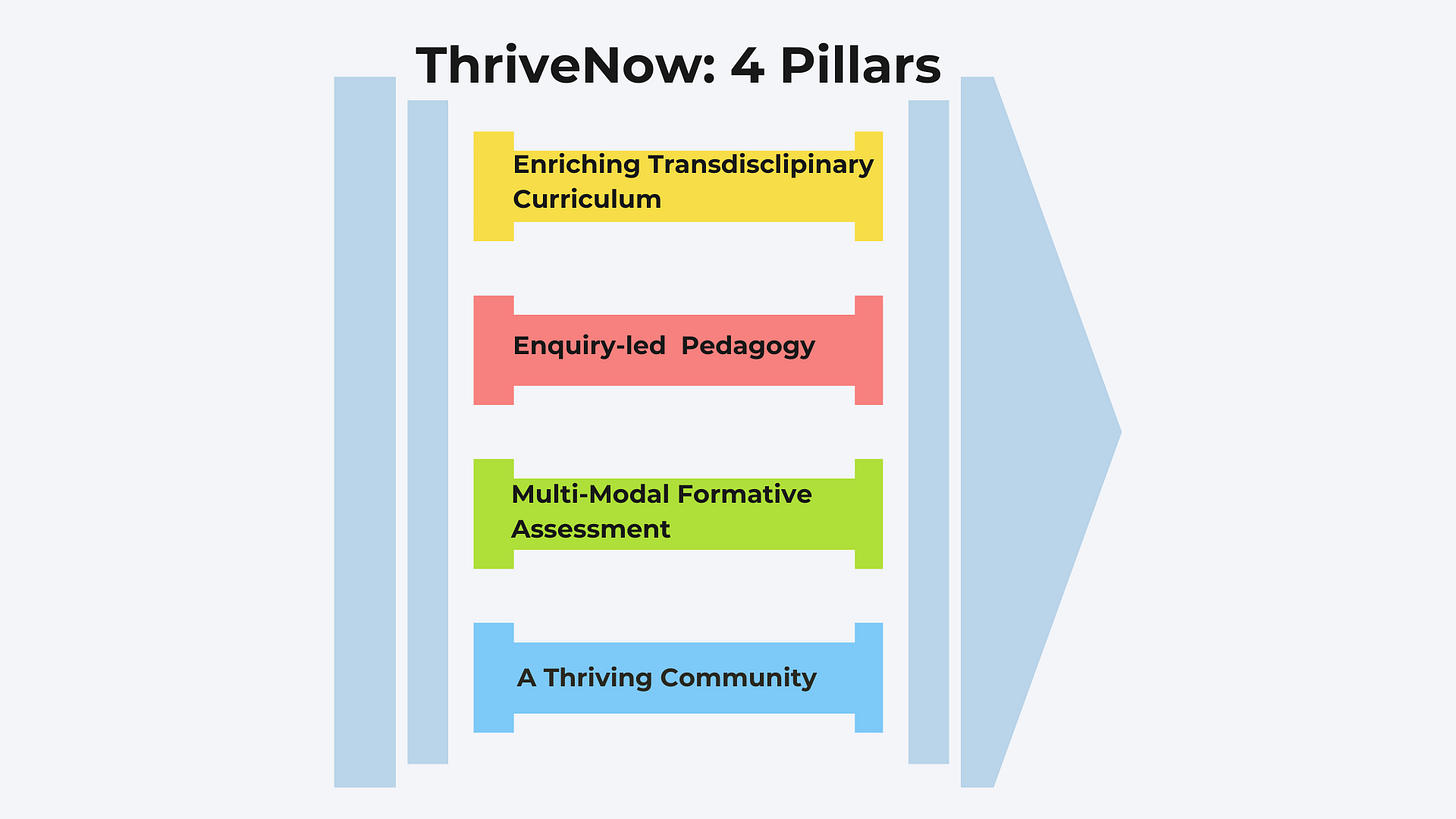The nuts and bolts of a Thriving Future
This week, I’ve been diving into the fascinating intersection of AI, technology, education and ‘being human’—where they align, where they clash, and how they can truly complement one another. Along the way, I’ve connected with an inspiring group of tech experts and researchers who are shaping this rapidly evolving space.
The question is: how can AI and tech elevate education without losing sight of what makes us human? And how are we at ThriveNow weaving these insights into innovative solutions that prioritise both progress and wellbeing?
Let me share what we’re discovering—and how it’s shaping the future we’re building.
The education system isn’t built for humans—but it can be!
One thing that unites everyone I’ve spoken to is the belief that wellbeing must be at the heart of education—for everyone. It’s a universal truth: when we feel valued, heard, and respected, we thrive. This isn’t a mechanical process; it’s uniquely human.
Frustratingly, many of the systems originally designed to enhance and organise the human experience no longer meet the needs of our evolved, modern world, nor the people in it. As technology and AI have advanced, these systems, education included, have failed to keep pace. Ironically, instead of adapting to support human potential, they now operate in ways that treat us more like machines than the complex, dynamic individuals we are.
That’s not to say that we get rid of the systems—in their essence, when well-designed, we know that systems have the capacity to serve their purpose… the key is updating them.
And that’s the magic of being human.
Recently, my husband and I took our kids to the cinema to see ‘The Wild Robot’. The story (no spoilers) revolves around a robot learning to embrace human qualities. It’s a theme we’ve seen time and again, from ‘Wall-E’ to ‘Terminator 2’: what resonates most is when people, and even robots, learn to care, feel safe, nurture, adapt and connect in a ‘human’ way.
Now imagine applying that same lesson to education. Whether you’re a parent looking in or a teacher looking out, all we truly want is for our children and young people to feel safe, supported, and seen; so their core human potential can shine. Yet, our current system isn’t designed for this.
Instead of drawing out the very best of our humanity, the education system treats students like cogs in an exam-driven machine and if you don’t fit in… you get spat out. The process of doing this is called ‘off-rolling’, where if a young learner is anticipated to bring GCSE average scores down for a school, they are either expelled, suspended or asked to leave prior to their exams being taken.
According to a report published by Ofsted in 2019, 24% of secondary teachers have experienced off-rolling, while an additional 51% had heard of it but not experienced it.
To help young people thrive, we must shift from treating education as a mechanised process focused on test scores to one that nurtures their full humanity. Learners are not robots; they deserve an approach that values their individuality and potential. By using AI as a tool to support, not control, we can create an education system that truly serves the people at its heart.
So where does AI fit in the education system?
As we reshape the secondary school system, where does AI and technology fit into this paradigm?
Eight years ago, I attended a talk by Professor Rose Luckin ahead of her book launch for ‘Machine Learning and Human Intelligence’. She highlighted a critical point: AI has the potential to alleviate burdens in education, particularly by automating repetitive tasks and enhancing personalisation. However, there’s a profound gap between AI’s promise and its practical integration into schools.
What’s missing?
A transformative approach that blends the precision of AI with the irreplaceable human expertise of teachers. While AI can excel in structuring, planning, and delivering information, teachers are the key to fostering 21st-century skills like empathy, curiosity, and critical thinking. A truly modern education system must combine these strengths to create a bridge between technology and humanity.
But we face two key challenges:
Barriers to AI adoption: While many teachers see the promise of AI, its potential remains largely untapped due to gaps in training and infrastructure. Without support, AI tools risk becoming underutilised or, worse, tools of over-standardisation.
A misaligned focus: The current education system still prioritises memorisation and rote learning—areas where machines will always outperform humans. Instead, we need to focus on developing what Sir Anthony Seldon identifies as the “seven core facets of humanity”: curiosity, agency, consciousness, awe and wonder, love and empathy, belonging, and spirituality.
Protecting wellbeing in a tech-driven world
As we integrate AI into education, we must also address an overlooked concern: the wellbeing of students and teachers in their use of technology. How do we ensure that AI supports growth rather than amplifies stress? How do we protect mental health in a hyper-digital world? These questions are critical to building a sustainable, human-centric model of education.
The future of education isn’t about choosing between humanity and technology—it’s about finding balance. By aligning the best of AI with the deepest qualities of what makes us human, we can create a system that not only educates but empowers.
At ThriveNow, we’re doing this together; building a model that prioritises humanity over mechanisation, a model that recognises that education is about nurturing the core brilliance and quite frankly genius of ‘being human’.
We’re not just imagining change. We’re making it happen.
How ThriveNow incorporates AI, tech and wellbeing into education
At ThriveNow, we believe that technology, including AI, should enhance education by serving learners and educators—not controlling them. Here’s how we’re putting this into practice through our four pillars: (if you can’t see the image, click display images above)
1. An enriching, transdisciplinary curriculum
We empower students to learn about AI and technology not just as tools but as forces shaping their world.
Alongside tech literacy, we teach mindfulness and wellbeing, ensuring young people understand how to balance digital engagement with mental and emotional health.
2. Enquiry-based pedagogy
Teachers use AI to streamline planning, workflows, and administrative tasks, freeing them to focus on fostering students' curiosity, empathy, and critical thinking.
This approach helps teachers bring out the uniquely human capabilities of each young learner, creating an enriched learning environment.
3. Formative assessment for lifelong learning
Students use technology to track and enhance their learning through digital learning portfolios, encouraging reflection and growth.
Our model reduces the exam burden, with only six core GCSEs, replaced by hands-on, practical learning experiences that build real-world skills.
4. A connected, thriving community
We cultivate a community that understands the relationship between AI, technology, and humanity.
Through collaboration and dialogue, we explore how technology can amplify human potential rather than diminish it, ensuring a future where learning remains deeply personal and meaningful.
At ThriveNow, we’re not just preparing students for the future—we’re empowering them to shape it, with AI and tech as tools in their hands and humanity in their hearts.
How you can help
ThriveNow is a community effort and a not-for-profit organisation and so we need your help. Together, we can create the change we all want to see. Here’s how you can be part of it:
1. Donate to help us fund this vision. Every contribution, no matter the size, gets us closer to a thriving future. Please consider donating today: https://gofund.me/814c7759
2. Share our mission. Forward this newsletter to your networks or post about our work online. Awareness is powerful.
3. Collaborate with us. If you have expertise, time, or ideas to share, I’d love to hear from you. Please do reach out to me via Linkedin or by email at kimberley@thrive-now.org
By taking even one of these steps, you’ll be part of a movement that’s shaping a brighter future for education, and for humanity.
Let’s work together, so we can all ThriveNow.
With gratitude and hope,
Kimberley 🌱







